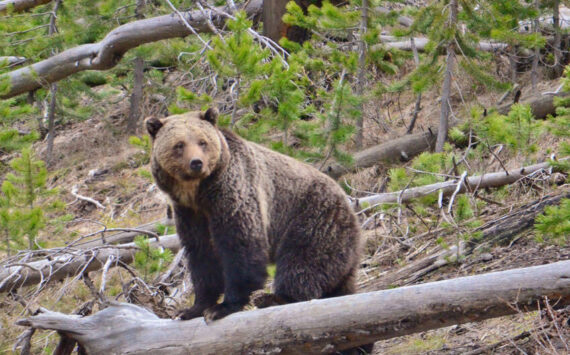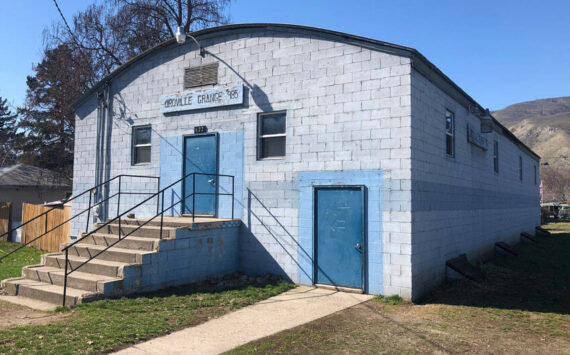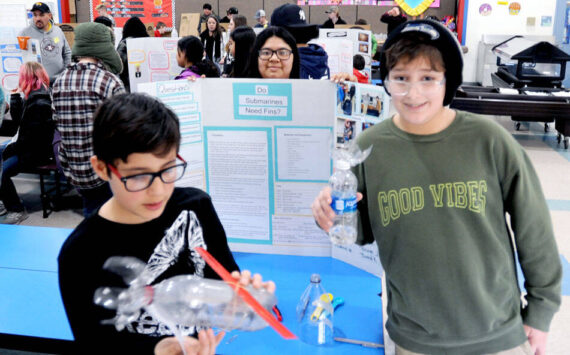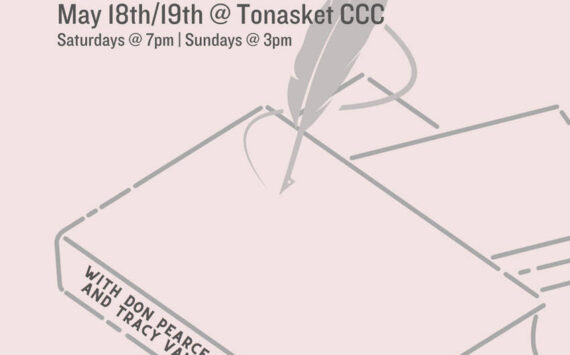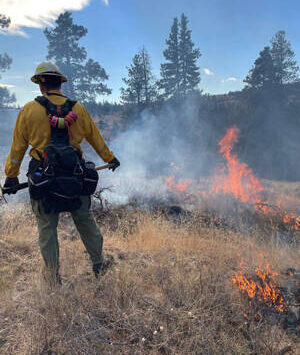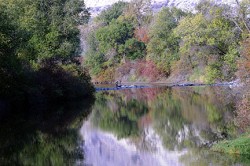

A cofferdam is visible where Colville Tribal workers are constructing a structure in the Similkameen River at its confluence with the Okanogan River just south of Oroville. The project will divert some survivability of summer Chinook salmon eggs that are
OROVILLE – The Colville Confederated Tribes are trying to enhance summer Chinook salmon survival by diverting at least part of the water that flows into the Similkameen by keeping it in the Okanogan.
After obtaining all the necessary permits, the workers are building a structure in the Similkameen River that would divert some of the water that comes down the Okanogan River from Zosel Dam and flows into the Similkameen only to meet back up with the Okanogan further down river.
“The problem is in the fall and during the winter when the water elevation is low. The water goes through Zosel dam and travels to the Similkameen, leaving almost a two mile stretch of the Okanogan in an almost dewatered state,” said Chris Fisher, a fish biologist with the Colville Confederated Tribes’ Fish and Wildlife Department.
“From October to November summer Chinook spawn within the reach, the eggs incubate in November through February and into March. If the reach is dewatered then the eggs dry out and die,” Fisher said.
Fisher explained that the state Department of Ecology selected an engineer to do the design work for flow management to raise the level in the cross channel so water flows to the Okanogan, rather than just the Similkameen.
“It won’t divert all the water from the Similkameen, but it prevents the entire flow from going past the reach where it wouldn’t aid the progeny of the summer Chinook,” he said. “We anticipate the project to be completed within two weeks from today,” Fisher said last Friday.
The dewatering situation seems to have become more extreme in the last several years and caused enough concern in one of Fisher’s co-workers that he brought the matter up with Ecology and this led to the current action.
“Right now it looks like a lot of ground disturbance, but in a couple of years you won’t even notice it as it gets grown over. A boat should still be able to pass over the work unless there was some sort of extremely low flow situation. What can be most easily seen right now is the temporary cofferdam that was constructed to allow the work to be done,” he said.
